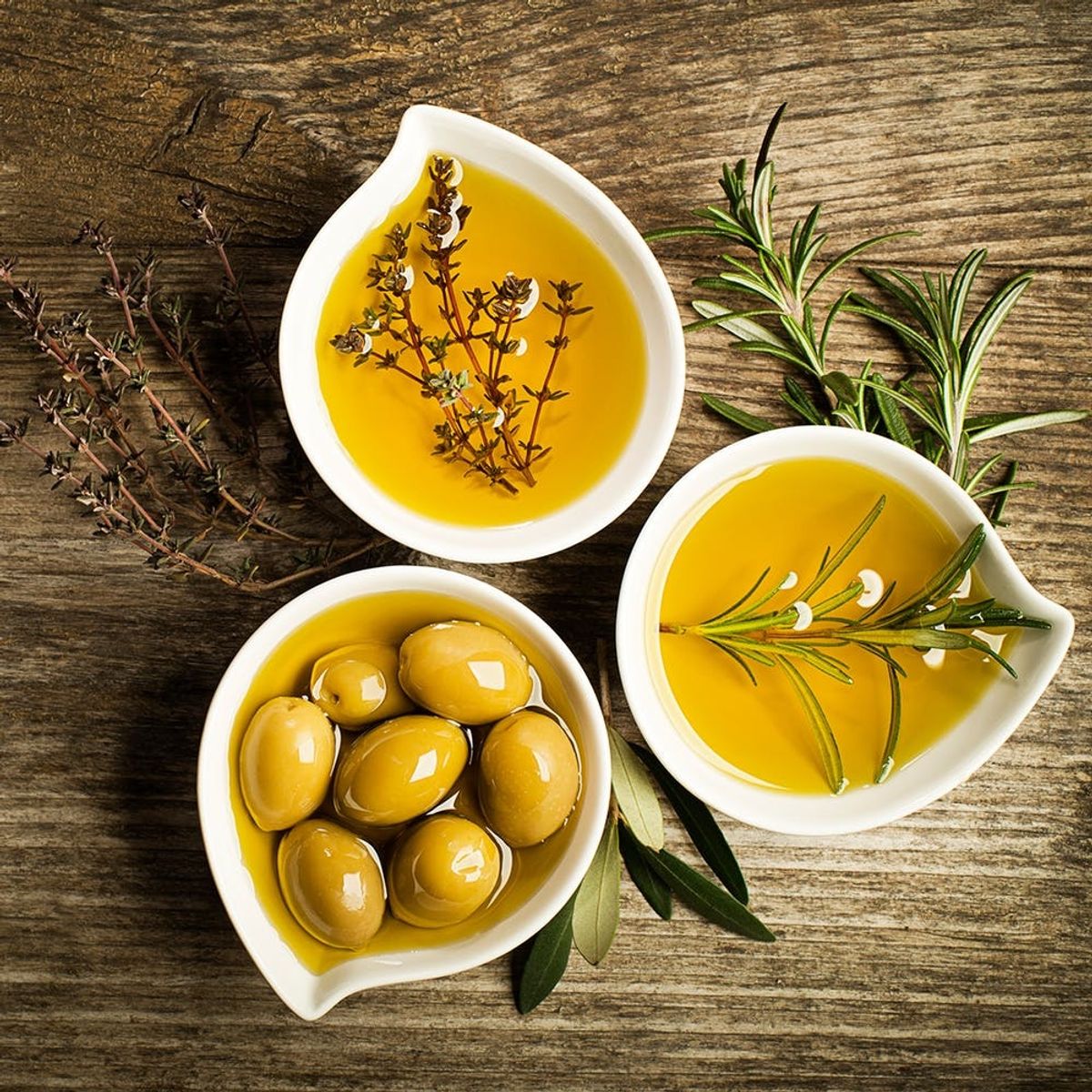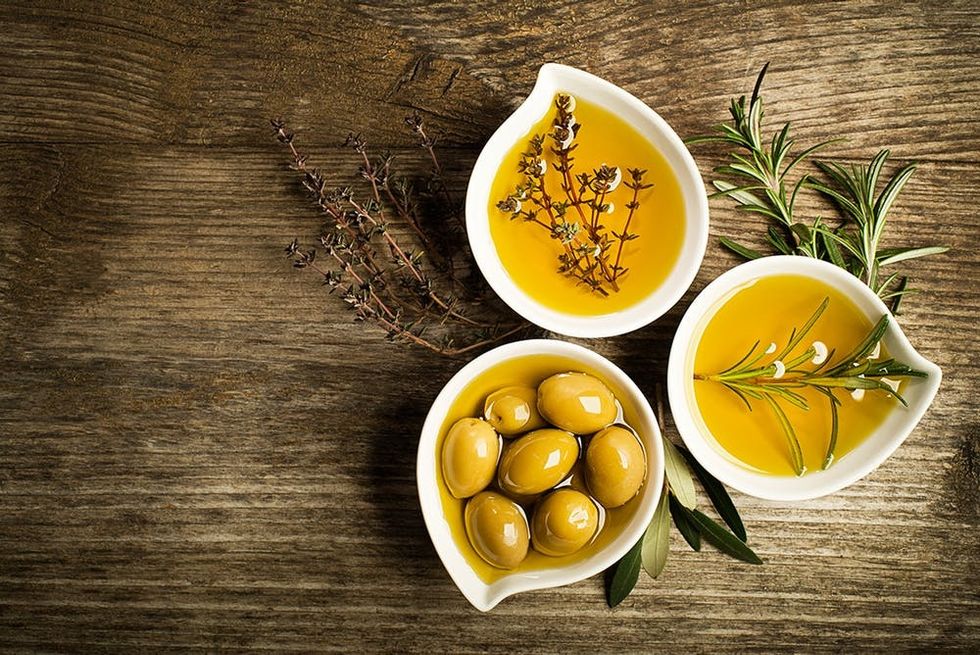All the olive oils!
What the Heck’s the Difference Between All Those Different Types of Olive Oils?

You’re not alone if you don’t fully get the differences between regular virgin and extra virgin olive oils. What you reach for when making a vinaigrette won’t necessarily be optimal for sautéing. And there’s that pesky myth floating around that you shouldn’t fry things in olive oil. To get the lowdown, we turned to an expert, Luisito Cercaci, vice president of quality and research & development at Pompeian, who told us that things aren’t so cut and dry. Allow this breakdown of the different kinds of olive oil to be your guide for when and how you should use them.

knowing the types
You may be most familiar with extra virgin olive oil, but what about virgin or plain ol’ olive oil? According to Cercaci, there are three main types of olive oil (though virgin olive oil is relatively uncommon to see in stores). They’re all made with the same basic ingredient (olives), but the way they’re processed gives each its own unique flavor.
Extra virgin olive oil is the highest quality, has a generally fruity flavor, and contains less than one percent fatty acid. It’s produced by pressing crushed olives with a mechanical process at cold temperatures (you’ll see “cold-pressed” on the label), meaning no high heat or chemicals are used to extract the oil from the olives. It also undergoes rigorous testing and must past both a chemical test for purity and a sensory evaluation done by an accredited trained testing panel.
Virgin olive oil isn’t commonly sold in grocery stores. It exhibits many of the same qualities as extra virgin and is also cold-pressed, but it has a higher acid content (around two percent). Oil with this designation is allowed more sensory defects than extra-virgin.
Olive oil or pure olive oil is a blend of extra virgin, virgin, and/or refined olive oils that are mixed together to create an all-purpose product, according to Cercaci. Olive oil that’s a blend of refined olive oil and virgin or extra virgin olive oil has a fatty acid content of about 0.8 percent, while olive oil that’s purely refined has an acid content of about 0.3 percent.
cooking with olive oil
Now that we know the difference between how these oils are made, it’s time to find out how to cook with them. Cercaci says that while you can use high-quality extra virgin olive oil for most cooking applications, there are some exceptions.
For everyday cooking and low-heat sautéing, look for an all-purpose bottle labeled “pure olive oil.”
For high-heat cooking, like frying and roasting, use an olive oil that’s labeled “light” or “extra light.” This refers to what is usually a refined olive oil that has a lighter flavor and higher smoke point than plain or extra-virgin oil. Because it has a more neutral taste, this type is ideal for use in baked goods, too.
For finishing dishes and salads dressings, you should opt for extra virgin olive oil. These oils have the most distinct flavor, which will help add extra oomph to your meals. EVOO does have a lower smoke point than other olive oil blends, but it’s usually fine to use when cooking on the stovetop or in the oven at medium temperatures.
choosing the best
There’s been a lot of news lately about olive oil fraud, and if you’re going to treat yourself to a nice bottle you want it to be legit. When you’re shopping, look for the U.S. Department of Agriculture (USDA) Quality Monitored Seal. Cercaci explains that this means USDA officers make unannounced visits to production facilities to obtain random samples of oil, which are then subjected to various tests to verify their purity and legitimacy. The North American Olive Oil Associate Seal is also an indicator of quality. This seal means that the product has been randomly tested off store shelves to ensure product quality and authenticity meets the International Olive Oil Council (IOC) standards, according to Cercaci. USDA-certified organic olive oil is also a safe bet, as organic oils have to undergo additional testing to confirm their origin and purity.
Follow us on Pinterest for more fun kitchen trivia and facts about your favorite ingredients.
(Photos via dulezidar / Getty Images)



















